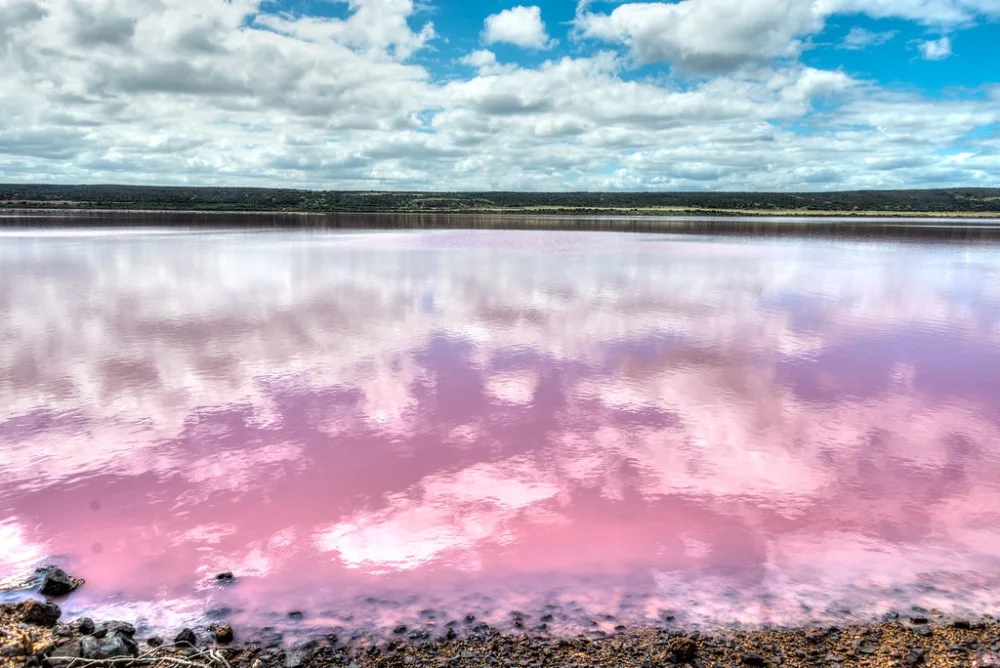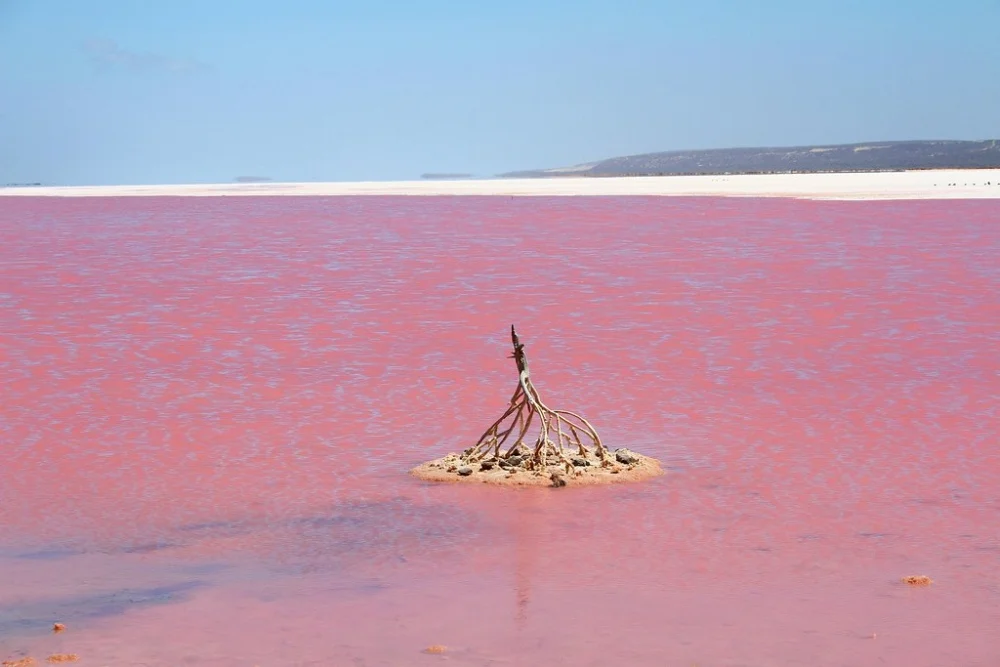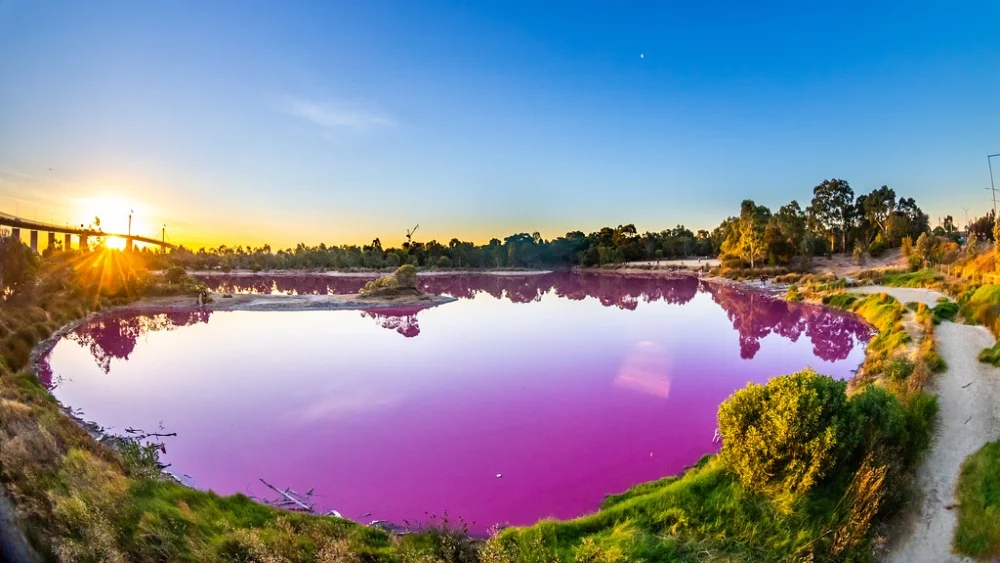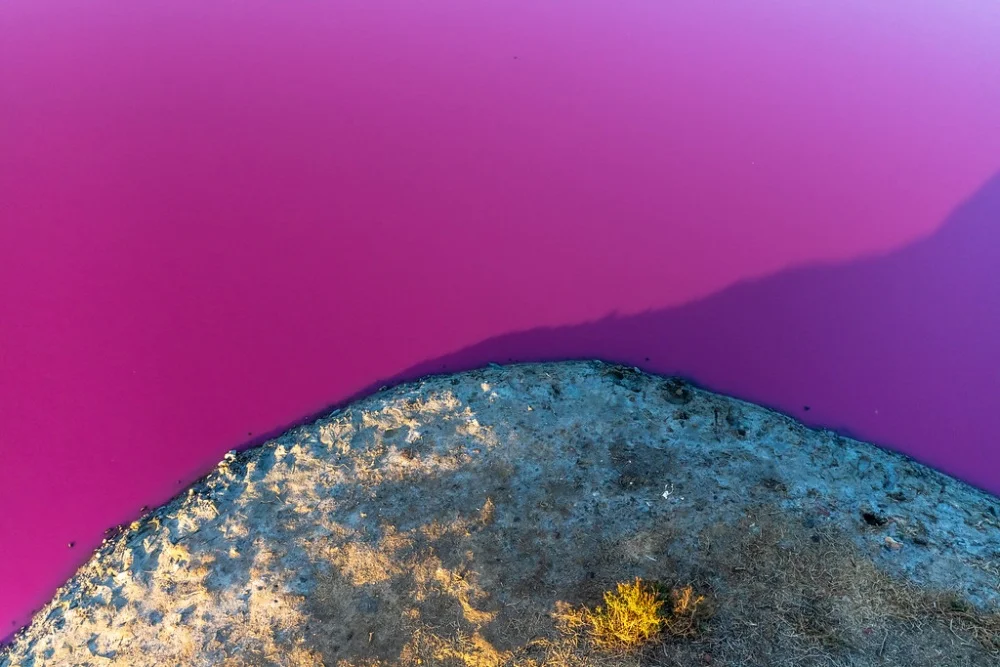Australia is not only known for its remarkable wildlife, including the world’s heaviest moth, but it also boasts exceptional natural attractions that are truly one-of-a-kind. From the captivating Great Barrier Reef to the impressive Dolerite Sea Cliffs of the Tasman Peninsula and the Twelve Apostles, the wonders of Australia are sure to leave you in awe. Among these extraordinary sights are the country’s stunning pink lakes that are nothing short of spectacular.

Typically, lakes have a blue or azure hue, but there are over 10 lakes in Australia whose water is quite unique. However, there is no need to worry as this phenomenon is entirely natural and not due to any toxic spill. The water in these salty lakes contains both Haloarchaea and a type of algae known as Dunaliella salina. These produce a red pigment, carotenoid, commonly found in carrots, fruits, and vegetables. During hot weather, the algae mixes with the salt in the lakes, causing the water to turn pink. Consequently, most pink lakes do not maintain their pink color throughout the year and frequently change colors depending on temperature fluctuations.

Interestingly, the “Pink Lake” near Esperance, Australia, is no longer pink and hasn’t been for quite some time. Experts speculate that a highway and rail line have disrupted the natural water flow into the salt lake system, decreasing its salinity and causing it to lose its characteristic pink color. Local residents have even decided to revert to the lake’s original name to avoid confusion. On the other hand, Lake Hillier, the most famous of the pink lakes, maintains its bubblegum pink hue all year round. It can be found on Middle Island in Western Australia, but visitors are not permitted to come too close to the lake to protect its scenic environment. Its water even retains its pinkish tint when bottled.

If you happen to be in the Mid-West region of Western Australia, don’t miss out on visiting Hutt Lagoon. It’s known for its stunning pink-colored waters that can range from lilac to bright pink depending on the weather. Since the area is quite dry, the water in the lagoon is often very shallow or completely dried up, leaving a thick layer of salt measuring 20 centimeters. It’s fascinating to learn that the lake only fills up twice every century, making it a rare and unique wonder of nature.

As previously mentioned, during the summer season, Hutt Lagoon may experience a dry spell. However, it is not advisable to drive or walk over it as the terrain is very salty and soft, which can make it quite slippery to navigate.

Under favorable conditions, unexpected pink lakes can emerge in various locations. An excellent example of this phenomenon is the Westgate Park lake in Melbourne. This man-made, saline lake tucked away in the industrial area of Melbourne turned pink for the first time in December 2012, during a massive heatwave that struck Australia’s east coast. Since then, the typically blue lake has turned pink almost every year between summer and autumn.

Westgate Park’s lake has become a beloved spot for tourists because it shares similarities with Lake Hillier and Hutt Lagoon. Plus, you don’t need to spend money on renting a boat or helicopter to see the enchanting lake.

Some individuals may question whether it is feasible to take a swim in the captivating waters of the pink lakes. In theory, it is entirely safe to indulge in a swim in these bodies of water, although they are exceedingly saline, they pose no harm to human skin. Nonetheless, it is uncommon for anyone to take a dip in the lakes. National parks and officials advise against swimming in them and urge people to leave the pink lakes and their environs undisturbed as much as possible. This is to safeguard these remarkable natural wonders for the generations to come.
